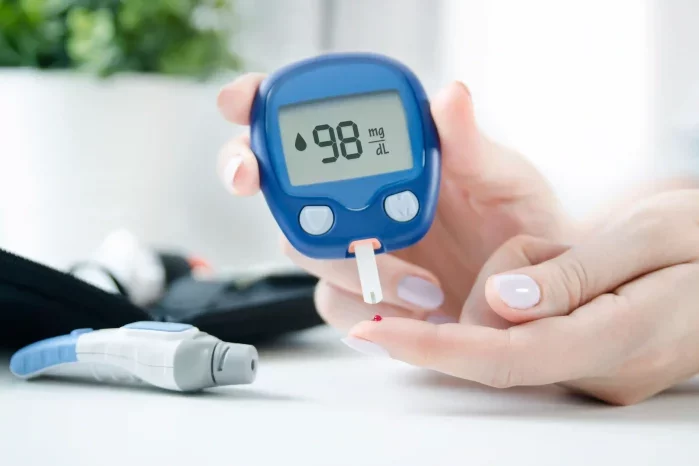In the realm of diabetes mellitus, the 3 P’s—polyuria, polydipsia, and polyphagia—are hallmark symptoms that often herald the onset of the condition. These classic signs serve as red flags, alerting individuals and healthcare providers to the possibility of underlying glucose dysregulation. In this comprehensive article, we delve into the mechanisms behind the 3 P’s, their clinical significance in diabetes diagnosis, and the broader implications for disease management and prevention.
1. Polyuria (Excessive Urination):
Polyuria refers to increased urine production and frequent urination, a common manifestation of diabetes mellitus resulting from elevated blood glucose levels. The kidneys play a central role in regulating urine volume through the process of filtration, reabsorption, and excretion. In diabetes, hyperglycemia exceeds the renal threshold for glucose reabsorption, leading to glucose spillage into the urine (glycosuria). The presence of glucose in the urine creates an osmotic diuretic effect, drawing water from the bloodstream into the urine and increasing urine output.
Mechanisms:
- Hyperglycemia exceeds the renal threshold for glucose reabsorption.
- Glucose spillage into the urine creates an osmotic diuretic effect.
- Increased urine production results in polyuria and frequent urination.
Clinical Significance:
- Polyuria is often an early symptom of diabetes mellitus, particularly type 1 diabetes.
- It may lead to dehydration, electrolyte imbalances, and nocturia (excessive urination at night).
- Monitoring urine output and fluid intake is crucial for managing diabetes-related polyuria and preventing complications.
2. Polydipsia (Excessive Thirst):
Polydipsia refers to excessive thirst and fluid intake, a physiological response to dehydration and hyperosmolality resulting from polyuria in diabetes mellitus. As the body loses water through increased urine output, extracellular fluid volume decreases, triggering thirst sensations and prompting individuals to drink more fluids to replenish lost water. Despite increased fluid intake, polydipsia persists due to ongoing urinary losses and the osmotic diuretic effect of hyperglycemia.
Mechanisms:
- Polyuria leads to dehydration and extracellular fluid volume depletion.
- Thirst receptors in the hypothalamus are stimulated, triggering sensations of thirst.
- Excessive fluid intake compensates for fluid losses but does not alleviate polydipsia due to ongoing urinary losses.
Clinical Significance:
- Polydipsia is a cardinal symptom of diabetes mellitus, often accompanying polyuria.
- It serves as a physiological response to dehydration and hyperosmolality.
- Addressing fluid intake and maintaining hydration is essential for managing polydipsia and preventing dehydration-related complications.
3. Polyphagia (Excessive Hunger):
Polyphagia refers to excessive hunger and increased appetite, a common symptom of uncontrolled diabetes mellitus resulting from cellular starvation despite elevated blood glucose levels. In diabetes, impaired insulin action or insulin deficiency prevents glucose uptake by cells, leading to a state of cellular energy deprivation. To compensate for inadequate energy supply, the body increases appetite and food intake in an attempt to meet metabolic demands, resulting in polyphagia.
Mechanisms:
- Impaired insulin action or insulin deficiency prevents glucose uptake by cells.
- Cellular energy deprivation triggers hunger signals and increases appetite.
- Excessive food intake attempts to compensate for inadequate energy supply but does not resolve cellular starvation.
Clinical Significance:
- Polyphagia is a common symptom of uncontrolled diabetes mellitus, particularly type 1 diabetes and poorly controlled type 2 diabetes.
- It reflects cellular starvation despite elevated blood glucose levels.
- Monitoring food intake, carbohydrate consumption, and meal timing is crucial for managing polyphagia and optimizing glycemic control.
Conclusion:
The 3 P’s—polyuria, polydipsia, and polyphagia—are classic symptoms that often serve as harbingers of diabetes mellitus, signaling underlying glucose dysregulation and metabolic disturbances. Understanding the mechanisms behind the 3 P’s and their clinical significance is essential for timely diagnosis, appropriate management, and prevention of diabetes-related complications. By recognizing these hallmark symptoms and addressing them proactively, individuals and healthcare providers can take proactive steps to manage diabetes effectively and improve overall health outcomes.



























